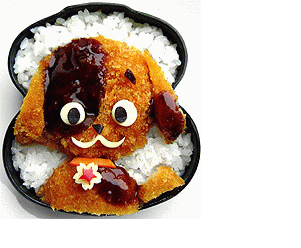Not only do frozen main dishes make your cooking life less hectic, they are also smart economically.
 Freezing Tips
Freezing Tips
Cooling before freezing is necessary for two important reasons: firstly, extra heat will raise the temperature of the freezer, and secondly, the outer edges of the hot or warm dish will freeze hard quickly while the inside may not cool in time to prevent spoilage.
Follow these steps when preparing and freezing your own main dishes to ensure food safety and quality:
 Cool precooked dishes as quickly as possible before they are placed in the freezer.
Cool precooked dishes as quickly as possible before they are placed in the freezer.
 For fastest cooling, place the pan of hot food in a sink filled with ice water (or in a larger pan of ice water). If you're cooling a soup, stew, or sauce, stir occasionally to help it cool evenly.
For fastest cooling, place the pan of hot food in a sink filled with ice water (or in a larger pan of ice water). If you're cooling a soup, stew, or sauce, stir occasionally to help it cool evenly.
 Once the dish is cooled, portion it into meal-sized containers or packages. Label and date the containers. Place them in the coldest area of your freezer until completely frozen. Rearrange as necessary.
Once the dish is cooled, portion it into meal-sized containers or packages. Label and date the containers. Place them in the coldest area of your freezer until completely frozen. Rearrange as necessary.
 Save yourself from the dinnertime crunch by preparing your own meals ahead of time. Form your own "make-ahead meals" club and invite friends over to prepare a week's worth of dinners--or just throw an extra meatloaf in the oven when you're preparing tonight's main dish.
Save yourself from the dinnertime crunch by preparing your own meals ahead of time. Form your own "make-ahead meals" club and invite friends over to prepare a week's worth of dinners--or just throw an extra meatloaf in the oven when you're preparing tonight's main dish.
 Freezing Tips
Freezing TipsCooling before freezing is necessary for two important reasons: firstly, extra heat will raise the temperature of the freezer, and secondly, the outer edges of the hot or warm dish will freeze hard quickly while the inside may not cool in time to prevent spoilage.
Follow these steps when preparing and freezing your own main dishes to ensure food safety and quality:
 It's Cold in There
It's Cold in ThereNot all freezer containers are created equal: use specially designed freezer bags, airtight containers, and aluminum foil to maintain the quality of your foods. Poorly wrapped foods risk damage from freezer burn--a loss of moisture which affects both taste and texture--and can absorb or transfer smells from other foods in the freezer. Follow these wrapping and container tips to ensure the quality and safety of your food:
 Warming Trends
Warming TrendsThawing foods at room temperature is a bad idea--with the exception of muffins, breads and other baked goods. Bacteria can grow in the thawed portion of prepared foods, releasing toxins that are not safe to eat even after cooking. To ensure that your food is safe to eat, follow one of these proper ways to thaw:
 In the refrigerator: Plan ahead, as this is the slowest but safest thawing technique. Small frozen items may thaw in a few hours, while larger items will take significantly longer--overnight and then some.
In the refrigerator: Plan ahead, as this is the slowest but safest thawing technique. Small frozen items may thaw in a few hours, while larger items will take significantly longer--overnight and then some. In cold running water: Place the frozen food in a leak-proof bag and place it under cold running water. If this seems wasteful, put the plug in the sink, and keep an eye on the water level. Bail out extra water and use it for your plants.
In cold running water: Place the frozen food in a leak-proof bag and place it under cold running water. If this seems wasteful, put the plug in the sink, and keep an eye on the water level. Bail out extra water and use it for your plants. In a microwave on the defrost setting: Plan to cook the food immediately after it has thawed in a microwave, because some areas of the food may have begun cooking during the defrost cycle.
In a microwave on the defrost setting: Plan to cook the food immediately after it has thawed in a microwave, because some areas of the food may have begun cooking during the defrost cycle. Best if Used By:
Best if Used By:Although freezing keeps food safe for an indefinite amount of time, that doesn't mean it'll taste good: eat your dishes within a reasonable time period for quality's sake. And if the food is obviously damaged (shriveled, with white or frosty spots) it should be discarded.
This chart lists recommended storage times for popular precooked foods--casseroles, soups, lasagna--to ensure high-quality results:
Type of Food
* Tomato/vegetable sauces = 6 months
* Meatloaf (any type of meat) = 6 months
* Soups and stews = 2-3 months
* Poultry and Meat Casseroles = 6 months
* Poultry (cooked, no gravy) = 3 months
* Poultry (with gravy/sauce) = 5-6 months
* Meatballs in sauce = 6 months
* Pizza dough (raw, homemade) = 3-4 weeks
* Muffins/quick breads (baked) = 2-3 months
 Don't Crowd the Freezer
Don't Crowd the Freezer








































.jpg)





No comments:
Post a Comment